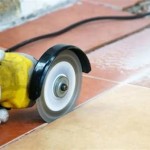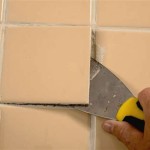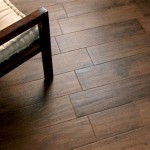Get The Perfect Shine: How To Clean Saltillo Tiles In Shower
Saltillo tiles, known for their rustic beauty and warm terracotta hues, are a popular choice for flooring and accents throughout the home, including showers. Their porous nature, however, requires specific cleaning methods to maintain their aesthetic appeal and prevent damage. In the shower environment, Saltillo tiles are constantly exposed to moisture, soap scum, and hard water deposits, which can lead to staining, discoloration, and even deterioration of the tile and its sealant. This article provides a comprehensive guide for effectively cleaning Saltillo tiles in the shower, ensuring they retain their characteristic shine and durability.
The proper cleaning of Saltillo tiles in the shower involves understanding the tile's composition, the types of stains commonly encountered, and the appropriate cleaning techniques. Using the wrong products or methods can strip the sealant, etch the tile surface, or contribute to the growth of mold and mildew. Therefore, a systematic approach is crucial for achieving optimal results.
Understanding Saltillo Tile Characteristics
Saltillo tiles are made from clay sourced primarily from the Saltillo region of Mexico. This clay is hand-shaped, sun-baked, and traditionally fired in kilns, resulting in variations in color, texture, and size. These variations contribute to the tile's unique character, but also influence its porosity. Unlike porcelain or ceramic tiles, Saltillo tiles are highly porous, meaning they readily absorb liquids. This inherent porosity necessitates the application of a sealant to protect the tile from staining and water damage. The sealant acts as a barrier, preventing liquids from penetrating the tile's surface. Over time, this sealant can wear away, particularly in high-moisture areas like showers, leaving the tile vulnerable to damage. Therefore, understanding the existing sealant and its condition is paramount to effective cleaning.
In shower environments, the sealant is constantly exposed to water, soap, and shampoos, which can break down its protective properties. Hard water minerals also contribute to sealant degradation and can leave unsightly deposits on the tile surface. The type of sealant used on Saltillo tiles can vary, some being more resistant to water and chemicals than others. Identifying the sealant, if possible, will help determine the appropriate cleaning products and methods to use. Furthermore, the grout between the tiles, often composed of cementitious materials, is also porous and susceptible to staining. Cleaning the grout lines effectively is equally important for maintaining the overall appearance of the shower.
The natural variances in Saltillo tiles also require careful consideration when choosing cleaning agents. Abrasive cleaners can scratch or dull the tile's surface, diminishing its natural sheen. Acidic cleaners, while capable of removing hard water stains, can etch the tile and damage the sealant. Therefore, cleaning products must be selected with caution and tested in an inconspicuous area before being applied to the entire shower area. The water hardness in a particular location also plays a role in stain formation and cleaning effectiveness. Hard water contains high levels of minerals, such as calcium and magnesium, which can leave behind stubborn deposits. These deposits require specialized cleaning solutions or techniques to remove without harming the tile or sealant.
Key Steps For Cleaning Saltillo Tiles in the Shower
The cleaning process of Saltillo tiles in the shower should be done using the following steps:
1. Initial Assessment and Preparation: Before beginning the cleaning process, thoroughly assess the condition of the Saltillo tiles. Identify any areas with significant staining, soap scum buildup, or sealant damage. Check the grout lines for mold or mildew growth. Gather the necessary cleaning supplies, including a pH-neutral tile cleaner, a soft-bristled brush, a sponge, a bucket of warm water, and a microfiber cloth. Protect surrounding surfaces, such as shower doors and fixtures, with plastic sheeting or towels to prevent accidental damage from cleaning solutions. Ensure adequate ventilation in the shower area by opening a window or turning on the exhaust fan.
2. Pre-Cleaning Rinse: Thoroughly rinse the Saltillo tiles with warm water to remove loose dirt, debris, and surface soap scum. This pre-cleaning rinse helps to loosen stubborn stains and prepares the tile surface for the application of the cleaning solution. Use a showerhead or a bucket of water to ensure all areas are adequately rinsed. Pay particular attention to areas with heavy soap scum buildup or hard water deposits. Inspect the grout lines during the rinsing process to identify any areas that require extra attention.
3. Application of Cleaning Solution: Dilute the pH-neutral tile cleaner according to the manufacturer's instructions. Avoid using harsh chemicals, abrasive cleaners, or acidic solutions, as these can damage the Saltillo tile and its sealant. Apply the diluted cleaning solution to the tile surface using a sponge or a spray bottle. Allow the solution to sit on the tile for a few minutes to penetrate the dirt and grime. Do not allow the solution to dry on the tile surface, as this can leave a residue. For areas with heavy staining or soap scum buildup, consider using a specialized tile cleaner specifically formulated for these types of stains. Always test the cleaner in an inconspicuous area before applying it to the entire shower area.
4. Scrubbing and Cleaning: Use a soft-bristled brush to gently scrub the Saltillo tiles, paying particular attention to the grout lines. Avoid using abrasive scrub brushes or scouring pads, as these can scratch the tile surface. Scrub in a circular motion to loosen dirt and grime. For stubborn stains, apply a paste of baking soda and water to the affected area and allow it to sit for a few minutes before scrubbing. Rinse the brush frequently with clean water to remove dirt and debris. For hard-to-reach areas, such as corners and edges, use a detail brush or a toothbrush. Ensure all areas of the shower are thoroughly scrubbed, including the floor, walls, and any built-in shelves or niches.
5. Rinsing and Drying: Thoroughly rinse the Saltillo tiles with clean water to remove all traces of the cleaning solution. Use a showerhead or a bucket of water to ensure all areas are adequately rinsed. Inspect the tile surface for any remaining dirt or grime. If necessary, repeat the cleaning and rinsing process. Once the tiles are thoroughly rinsed, use a clean microfiber cloth to dry the surface. Microfiber cloths are highly absorbent and will help to prevent water spots. Pay particular attention to the grout lines, as these areas tend to hold moisture. Ensure the shower area is completely dry to prevent the growth of mold and mildew.
Maintaining the Shine and Preventing Future Stains
Once the Saltillo tiles are clean, implementing preventative measures can help maintain their shine and prevent future staining. Regular cleaning is essential for preventing the buildup of soap scum, hard water deposits, and mold. Wiping down the shower walls and floor after each use can significantly reduce the amount of cleaning required. Proper ventilation is also crucial for preventing moisture buildup, which can contribute to mold and mildew growth. Consider installing a dehumidifier in the bathroom or opening a window after showering to promote air circulation.
Periodic resealing of the Saltillo tiles is also necessary to maintain their protective barrier. The frequency of resealing depends on the type of sealant used, the amount of shower usage, and the water hardness in the area. Generally, resealing should be done every one to two years. Before resealing, ensure the tiles are thoroughly cleaned and dried. Apply the sealant according to the manufacturer's instructions. Allow the sealant to cure completely before using the shower. Consider using a penetrating sealant, which will penetrate the tile's pores and provide long-lasting protection.
Using a squeegee after each shower can help remove excess water from the tile surface, preventing the formation of water spots and hard water deposits. Store shower products, such as shampoo and soap, in a way that minimizes the amount of residue left on the tile. Consider using liquid soaps and shampoos instead of bar soaps, as bar soaps tend to leave behind more residue. Regularly inspect the grout lines for cracks or damage, and repair them promptly to prevent water from seeping underneath the tiles. Consider using epoxy grout, which is more resistant to water and staining than cementitious grout. By implementing these preventative measures, the Saltillo tiles in the shower can remain beautiful and well-maintained for years to come.

This Mexican Saltillo Floor Regained Its Natural Charm With The Best Apopka Grout Cleaning Specialists

How To Clean Mexican Saltillo Tile Build Better Live Home Improvemently

How Do I Deep Clean And Reseal Saltillo Tile Floors Hometalk

Essential Tips For Cleaning Mexican Tiles

How Do I Deep Clean And Reseal Saltillo Tile Floors Hometalk

Essential Tips For Cleaning Mexican Tiles

How To Clean Seal Saltillo Tile A Complete Guide Rexpro Sealer

How To Clean And Maintain Mexican Saltillo Tile Clay Imports

Saltillo Tile Cleaning In Dallas Fort Worth

How To Clean Saltillo Tile
Related Posts








